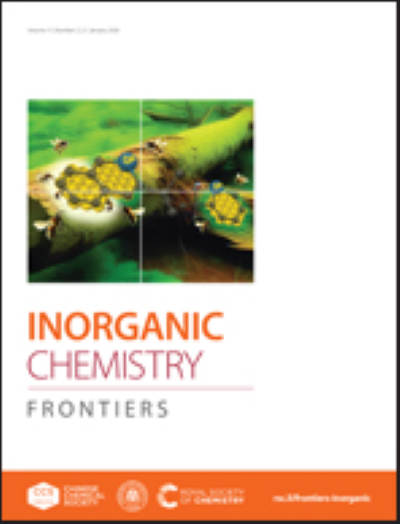Ni3S2/NiS异质结构中Fe3+动态平衡和ce掺杂电子协同作用增强碱性析氧
IF 6.4
1区 化学
Q1 CHEMISTRY, INORGANIC & NUCLEAR
引用次数: 0
摘要
过渡金属硫化物体系中加入铁元素可以显著提高析氧反应(OER)催化活性。然而,铁组分的高溶解倾向可能导致活性位点的不可逆损失,从而影响催化体系的长期稳定性。本文通过水热硫化和电化学活化相结合的方法,在泡沫镍基体上成功构建了Fe/Ce掺杂Ni3S2/NiS异质结构(FeOOH, Ce-Ni3S2/NiS)。通过建立电解质中Fe3+与表面FeOOH层之间的动态溶解-吸附平衡,有效减轻了活性位点的损失。同时,构建的Fe-Ce双活性位点通过协同效应进一步稳定了催化界面。OER性能测试表明,该催化剂需要266 mV过电位才能达到100 mA cm-2,与对照样品相比,其塔菲尔斜率(27.35 mV dec1)和电荷转移电阻(1.161 Ω)显著提高。值得注意的是,催化剂在2.0 A cm-2的超高电流密度下保持了100小时的稳定运行。此外,阴离子交换膜(AEM)电解槽(FeOOH, Ce-Ni3S2/NiS//Pt)在1000 mA cm-2下连续运行100小时。本研究提出了一种电解质介导的动态界面调节策略,为开发具有高活性和优异稳定性的工业水电解催化剂提供了新的设计原则。本文章由计算机程序翻译,如有差异,请以英文原文为准。
Dynamic Fe3+ equilibrium and Ce-Doping Electronic Synergy in Ni3S2/NiS Heterostructures for Enhanced Alkaline Oxygen Evolution
The incorporation of iron species in transition metal sulfide systems can significantly enhance the oxygen evolution reaction (OER) catalytic activity. However, the high dissolution tendency of iron components may lead to irreversible loss of active sites, thereby compromising the long-term stability of the catalytic system. Herein, we successfully constructed an Fe/Ce doped Ni3S2/NiS heterostructure (denoted as FeOOH, Ce-Ni3S2/NiS) on nickel foam substrates through a combined hydrothermal sulfidation and electrochemical activation approach. By establishing a dynamic dissolution-adsorption equilibrium between Fe3+ in the electrolyte and the surface FeOOH layer, it effectively mitigated the loss of active sites. Simultaneously, the constructed Fe-Ce dual-active sites further stabilized the catalytic interface through synergistic effects. OER performance tests demonstrated that the catalyst required 266 mV overpotential to achieve 100 mA cm-2, with significantly improved Tafel slope (27.35 mV dec-1) and charge transfer resistance (1.161 Ω) compared to control samples. Remarkably, the catalyst maintained stable operation for 100 hours at an ultrahigh current density of 2.0 A cm-2. In addition, the anion-exchange membrane (AEM) electrolyzer (FeOOH, Ce-Ni3S2/NiS//Pt) was operated continuously for 100 hours at 1000 mA cm-2. This study proposes an electrolyte-mediated dynamic interface regulation strategy, providing new design principles for developing industrial water electrolysis catalysts with both high activity and exceptional stability.
求助全文
通过发布文献求助,成功后即可免费获取论文全文。
去求助
来源期刊

Inorganic Chemistry Frontiers
CHEMISTRY, INORGANIC & NUCLEAR-
CiteScore
10.40
自引率
7.10%
发文量
587
审稿时长
1.2 months
期刊介绍:
The international, high quality journal for interdisciplinary research between inorganic chemistry and related subjects
 求助内容:
求助内容: 应助结果提醒方式:
应助结果提醒方式:


